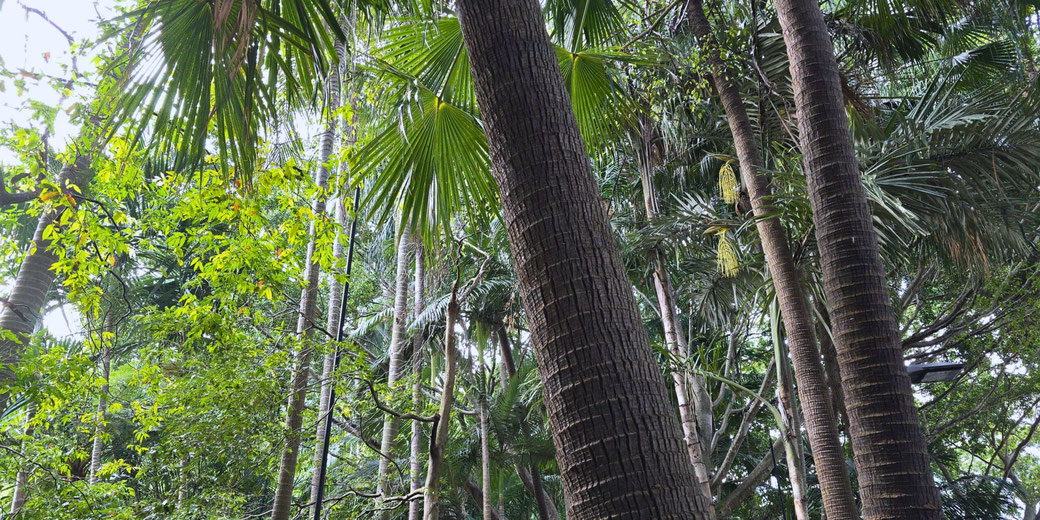Sahul: The ancient super-continent that once connected Australia with the world

During the last Ice Age, sea levels were much lower, and an ancient landmass once connected Australia, New Guinea, and Tasmania.
It was called Sahul. For millennia, it was a thriving ecosystem with flourishing flora and fauna and eventually, even humans settled there.
These newcomers had to quickly adapt to a challenging environment and cope with massive creatures.
What was Sahul like?
About 140 million years ago, the area of Sahul began separating from the supercontinent Gondwana.
As tectonic plates shifted, they created a landmass that became distinctly isolated from the rest of the world.
Then, during the Pleistocene epoch (from approximately 2.5 million years ago to about 11,700 years ago), lower sea levels exposed the landmass of Sahul to its fullest extent.
The areas of present-day Australia, New Guinea, and Tasmania were all united by this landmass.
This meant that migration and interaction could occur between various species across the entire area.

As far as researchers can determine, Sahul's geography was quite varied. It may have featured a mix of arid deserts, lush rainforests, and expansive grasslands.
Each of these environments would have supported diverse ecosystems and a wide range of animal and plant species.
However, the climate of Sahul changed over time due to its large expanse.
During the Pleistocene epoch, ice ages caused dramatic fluctuations in temperature and sea levels.
This altered habitats and forced species to adapt rapidly.
As a result, Sahul became home to remarkable megafauna. Giant marsupials such as Diprotodon roamed the land, which was the largest known marsupial comparable in size to the modern rhinoceros.
Also, the fearsome marsupial lion, Thylacoleo, was a top predator in these ecosystems.
However, they were all extinct by around 46,000 years ago, which was probably caused by a combination of climate change and the arrival of humans.

The arrival of humans
The earliest humans that migrated to Sahul probably came from Southeast Asia, most likely from the Wallacean islands (modern-day Indonesia) around 65,000 years ago.
They would have been able to cross a series of land bridges that had been exposed during lower sea levels.
During the Pleistocene Ice Age, sea levels were up to 120 meters lower than today.
The Indigenous peoples of Australia are believed to have been descended from these first migrants.
Over the next tens of thousands of years, the different people groups created new communities, each with their own social structures.
This is when we first see evidence of human activity. They produced rock art, which depicted stories and symbols that were significant to their communities.
This art, which is found in regions like Arnhem Land and the Kimberley, is a rare record of these peoples over time.
In fact, Arnhem Land is home to some of the oldest and most extensive rock art in the world, with pieces dating back over 40,000 years.
They depict extinct megafauna, hunting scenes, and spiritual symbols.

Dramatic ecological and environmental changes
As the last Ice Age ended around 12,000 years ago, temperatures increased and ice sheets melted. This led to rising sea levels, which submerged the land bridges that had connected the different lands together.
As a result, Tasmania was separated from mainland Australia about 10,000 years ago and New Guinea became separate about 8,000 years ago.
As sea levels continued to rise, interaction among these groups was limited due to geographical barriers.
Now isolated, each landmass experienced distinct ecological developments. In Australia itself, aridification intensified, which transformed formerly lush areas into deserts.
The shift forced many species to adapt or face extinction. Meanwhile, New Guinea's rainforests thrived, fostering rich biodiversity.
In contrast, Tasmania's cooler climate preserved different plant and animal species, distinct from those on the mainland.
Human activity also played an interesting role in these ecological changes.
For example, Indigenous Australians used fire as a tool for hunting and land management.
This practice, known as fire-stick farming, altered natural vegetation patterns.
However, it also promoted the growth of fire-resistant plants, such as eucalypts, and created open landscapes favorable for hunting.
The Tasmanian people adapted to live in small, mobile communities.
They had to cope with the cooler climate and relied on marine resources, including seals and shellfish.
The most famous archaeological discoveries
Scientific research on Sahul has unveiled a wealth of information about the early history of Australian First Nations peoples.
For example, in 1968, the discovery of Lake Mungo's human remains revolutionized our understanding of early human presence in Australia.
These remains, dating back approximately 42,000 years, discovered one of the earliest human settlements outside Africa.
Moreover, they offered rare insights into the burial practices and lifestyle of these early inhabitants.
In New Guinea, research has focused on early agricultural practices. Specifically, the Kuk Swamp archaeological site provided evidence of early cultivation dating back 7,000 years.
Scientists found remnants of ancient drainage systems and cultivated taro and banana plants, indicating sophisticated agricultural techniques.
In Tasmania, the Kutikina Cave, which was excavated in the 1980s, provided evidence of human occupation dating back 20,000 years.
It included tools and remains that show how prehistoric people adapted to cold environments during the Ice Age.
Researchers also found evidence suggesting a diet that included both sea and land resources.
What do you need help with?
Download ready-to-use digital learning resources
Copyright © History Skills 2014-2025.
Contact via email
With the exception of links to external sites, some historical sources and extracts from specific publications, all content on this website is copyrighted by History Skills. This content may not be copied, republished or redistributed without written permission from the website creator. Please use the Contact page to obtain relevant permission.





